Amazon Redshift is based on Postgresql, and even if there are some differences (cmp. https://docs.aws.amazon.com/redshift/latest/dg/c_redshift-and-postgres-sql.html), it does include the lag() function (see https://docs.aws.amazon.com/redshift/latest/dg/r_WF_LAG.html).
So your statement should probably look something like this (works in postgres)
UPDATE yourtable
SET number = (q1.percentage * q1.prevnumber)
FROM (SELECT Months, percentage, lag(number) OVER (ORDER BY Months) as prevnumber
FROM yourtable) q1
WHERE yourtable.Months = q1.Months AND yourtable.Months > 0;
You can also include a condition to only update those fields that do not have a value yet by adding something like AND Number IS NULL to the last WHERE clause. And if you have multiple years, you need to take that into account in your ordering, of course.
Have a look at these two SO posts for more detailed discussions and examples:
Is there a way to access the "previous row" value in a SELECT statement?
PostgreSQL update query with "lag()" window function
EDIT: This query will not update all rows in a single pass, as the query is based on the original table entries and on updating the row of Month 10 will have a NULL value as one of the factors of the multiplication (number from Month 9).
There are different approaches you can use to reach your desired result. I have added two examples below. Both work in postgres and should also work in redshift:
(1) You can repeat the above UPDATE statement the appropriate number of times using a WHILE loop. The following function iteratively updates the table until no more rows exist where number is NULL:
CREATE OR REPLACE FUNCTION update_numbers() RETURNS void AS
$BODY$
BEGIN
WHILE (SELECT COUNT(*) FROM yourtable WHERE number IS NULL) > 0 LOOP
UPDATE yourtable
SET number = (q1.percentage * q1.prevnumber)
FROM (SELECT Months, percentage, lag(number) OVER (ORDER BY Months) as prevnumber
FROM yourtable) q1
WHERE yourtable.number IS NULL
AND yourtable.Months = q1.Months
AND yourtable.Months > 0;
END LOOP;
END;
$BODY$
LANGUAGE plpgsql VOLATILE;
(2) You can use a CURSOR to loop through the individual rows in which number is NULL and update each of them one at a time:
CREATE OR REPLACE FUNCTION update_numbers() RETURNS void AS
$BODY$
DECLARE
rec record;
prev numeric;
cur cursor for (SELECT * FROM yourtable WHERE number IS NULL ORDER BY Months) FOR UPDATE;
BEGIN
FOR rec in cur LOOP
SELECT prevnumber INTO prev FROM (SELECT Months, percentage, lag(number) OVER (ORDER BY Months) as prevnumber
FROM yourtable) q1 where q1.months = rec.months;
UPDATE yourtable
SET number = (percentage * prev)
WHERE CURRENT of cur;
END LOOP;
END;
$BODY$
LANGUAGE plpgsql VOLATILE;
Calling either of these two with
SELECT update_numbers();
updates all rows of your example table.

